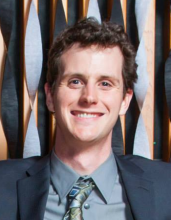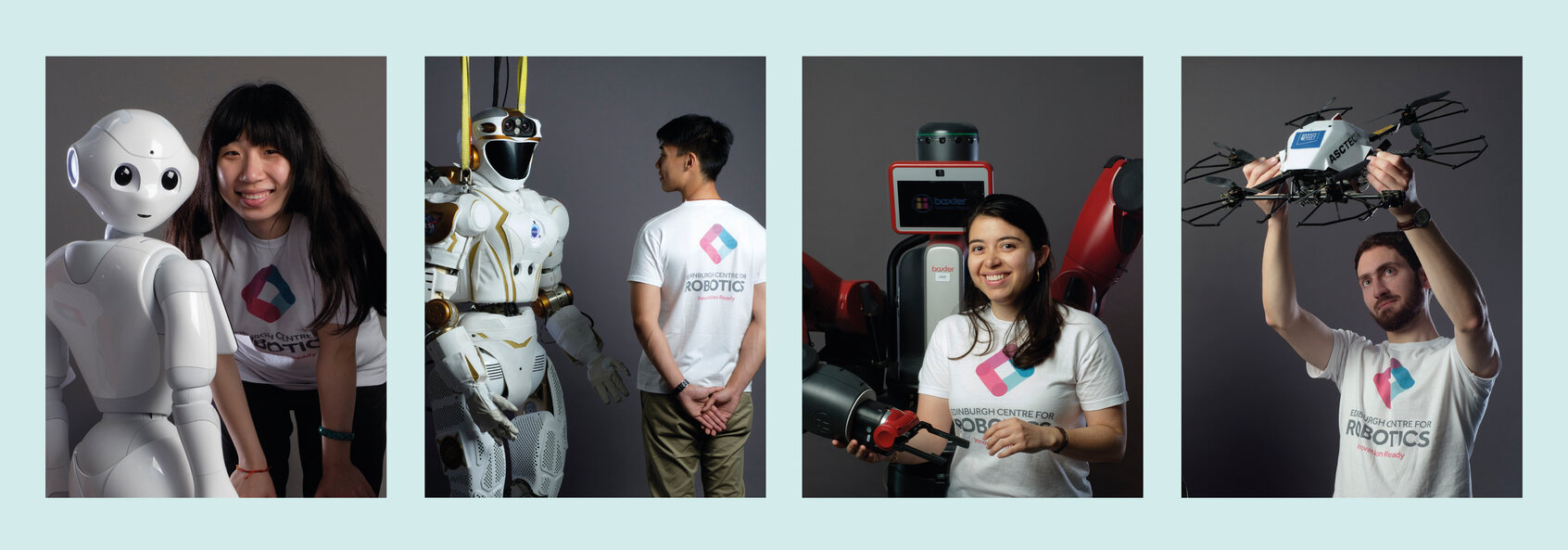Dr Andrew Brock
Thesis Title: Machine Analysis of Engineering Drawings
Examiners: Prof Mihaela Dinsonearu (Technical University of Cluj-Napoca) and Prof. Nick Taylor (Heriot-Watt University)
While engineering information is increasingly developed and communicated digitally, traditional media like technical prints are still in wide use for both manufacturing and inspection. Digitizing this information, either to preserve archival drawings or to interface with modern computer-controlled devices like CNC tools or CMMs, is time-consuming and may require an expert operator. In this work, we present the first holistic approach to semi-automatically extracting 3-dimensional geometry directly from a raster scan of engineering drawings. Our approach is capable of running autonomously or semi-autonomously, with a human operator correcting errors in each processing stage. We address four key subproblems in this task: identification, segmentation, association, and reconstruction. First, we develop a custom convolutional neural network to identify and localize all of the text and annotation elements in a drawing. We study neural network training techniques and introduce novel, general techniques to improve and accelerate said training in both generative and discriminative models. We produce a high-quality, domain-specific character recognition dataset comprising more than 500,000 annotations which we use to train these models. Second, to address the problem of part geometry segmentation and vectorization, we introduce a novel technique for extracting geometric primitives from line drawings based on neural networks and graph methods. Combining our model with a novel knowledge capture and data simulation pipeline, we are able to scale to any number of primitive classes with only minimal need for class-specific postprocessing. Third, we leverage the latent rules that underly drawing production to develop heuristics for tackling the problem of association: grouping identified drawing elements into callouts, and determining what part geometry the callouts refer to. Finally, we employ projection geometry methods that leverage the results of solving the first three problems to produce three-dimensional CAD models. Our work advances the state of the art in neural network training and provides a scalable framework for developing complete drawing analysis systems, providing a stepping stone towards the next generation of intelligent design software.
Publications: "Large Scale GAN Training for High Fidelity Natural Image Synthesis," Andrew Brock, Jeff Donahue, Karen Simonyan. Conference paper accepted for oral presentation (top 1.5\%) at ICLR 2019 "SMASH: One-Shot Model Architecture Search through HyperNetworks." Andrew Brock, Theodore Lim, J.M. Ritchie, Nick Weston. Conference paper, ICLR 2018 "Neural Photo Editing with Introspective Adversarial Networks." Andrew Brock, Theodore Lim, J.M. Ritchie, Nick Weston. Conference paper, ICLR 2017 "Generative and Discriminative Voxel Modeling with Convolutional Neural Networks." Andrew Brock, Theodore Lim, J.M. Ritchie, Nick Weston. 3D Deep Learning Workshop, NeurIPS 2016 "FreezeOut: Accelerate Training by Progressively Freezing Layers." Andrew Brock, Theodore Lim, J.M. Ritchie, Nick Weston. Optimization workshop, NeurIPS 2017 "ConvNet-Based Optical Recognition for Engineering Drawings." Andrew Brock, Theodore Lim, J.M. Ritchie, Nick Weston. Conference paper, ASME IDETC/CIE 2017 "Context-Aware Content Generation for Virtual Environments." Andrew Brock, Theodore Lim, J.M. Ritchie, Nick Weston. Conference paper, ASME IDETC/CIE 2016
Andrew Brock's background is in computational heat transfer and fluid dynamics for hybrid rocketry, control systems engineering for full-body haptic feedback, and social dance instruction. He holds an MSME from Cal Poly SLO.
Andrew is currently working as a research scientist at DeepMind in London.


